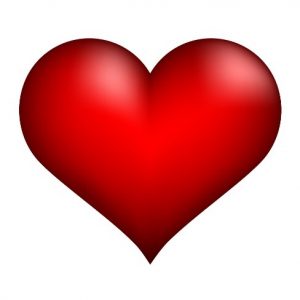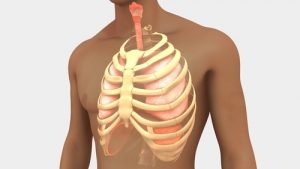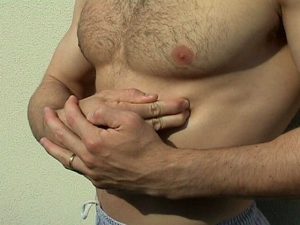You Don’t Need To Suffer Pain In The Side After A Bout With The Flu
Author: Julie Donnelly, LMT –The Pain Relief Expert
Editor: Dr. Steve Chaney
Happy Valentine’s Day
 While February is the shortest month of the year, to our northern family and friends it is the longest, seemingly endless, month. Where I live in Sarasota, Florida, winter brings us near-perfect days and cooler nights. It’s my favorite time of year. And of course, we all celebrate the holiday of love – Valentine’s Day!
While February is the shortest month of the year, to our northern family and friends it is the longest, seemingly endless, month. Where I live in Sarasota, Florida, winter brings us near-perfect days and cooler nights. It’s my favorite time of year. And of course, we all celebrate the holiday of love – Valentine’s Day!
Just a bit of trivia: In 1868, Richard Cadbury released the first Valentine’s Day box of chocolates, followed in 1902 with the first conversation hearts from the New England Confectionery Company. In the 1840s Esther A. Howland created the first commercial Valentine’s Day cards in the United States. Hallmark first offered Valentine’s Day cards in 1913 and began producing them in 1916. (Thanks to Wikipedia for all this interesting info).
February Is Also Flu Season –
A Tough Month For Colds & Coughs
How do you get side stitch pain releif? Have you ever had a cough that just lingers on and on? Sometimes you may cough so hard, and so much, that your side hurts. Some people call it a “side-stitch” because it feels like a sewing needle is being jammed in between your ribs. First it only hurts when you have a coughing fit, but eventually it could hurt just from breathing. Fortunately, it’s a simple thing to explain, and even easier to treat. It is caused by spasms in our intercostal muscles.
What Are Intercostal Muscles & What Do They Do?
 The intercostal muscles are between each rib, and like every other muscle they contract (shorten) and expand (lengthen). Visualize muscles going up and down between each rib, connecting one rib to the next rib.
The intercostal muscles are between each rib, and like every other muscle they contract (shorten) and expand (lengthen). Visualize muscles going up and down between each rib, connecting one rib to the next rib.
When you breathe in the intercostal muscles must lengthen to allow your ribs to separate so your lungs can expand and absorb oxygen.
In order to breath out, the muscles must contract and pull your ribs together. This puts pressure on your lungs so you can expel carbon dioxide from your body.
Coughing Causes Tiny Spasms In The Intercostal Muscles
 When you cough your ribs open and close suddenly. This isn’t a problem if you cough once or twice, but if you have a condition such as a cold, the flu or pneumonia, you may have severe and repeated coughing spells. This causes a repetitive strain injury to the intercostal muscles as you are coughing repeatedly.
When you cough your ribs open and close suddenly. This isn’t a problem if you cough once or twice, but if you have a condition such as a cold, the flu or pneumonia, you may have severe and repeated coughing spells. This causes a repetitive strain injury to the intercostal muscles as you are coughing repeatedly.
The tiny intercostal muscles are rapidly contracting and expanding, without a chance to relax. Eventually tiny muscle spasms are created in the muscles, each one shortening the muscle fibers. The spasms cause a strain to be put onto the attachment at the rib, laying the groundwork for a side-stitch. The strained muscle fibers prevent your ribs from opening properly as you take in a breath. As you gasp for air during your coughing attack, you are forcing your ribs to part, and the tight muscle is putting a strain on the bone. The strain feels like a needle or the point of a knife is being pushed into your side.
How To Release Muscle Spasms In The Intercostal Muscles
Using your opposite hand press your fingertip(s) into the exact point where you feel the pain. These spasms are specific, and they hurt exactly where you are feeling the pain.
Hold the pressure on the spasm for about one minute. You’ll feel the pain lessen as the spasm releases. Continue pressing on the point while you take in a slow, deep breath. Your goal is to open your rib cage as much as possible.
As you are pressing on the spasm and opening your rib cage so your lungs can fill with air, you are also stretching the intercostal muscle that was in spasm. Do this several times until the point no longer is painful. Press around your entire rib cage, as far as you can reach, and see if you find any other spasms between your ribs. If you do, treat each one the same way.
Fortunately, it is simple to self-treat spasms that cause pain. This is the case whether you are treating spasms that cause headaches, shoulder pain, low back pain, hip, knee, leg or foot pain. In fact, I resolved debilitating carpal tunnel syndrome by treating the muscles that impact the median nerve &/or my wrist and hand. For more information, visit www.JulstroMethod.com.
Wishing you well,
Julie Donnelly
These statements have not been evaluated by the Food and Drug Administration. This information is not intended to diagnose, treat, cure or prevent any disease.
About The Author
 Julie Donnelly is a Deep Muscle Massage Therapist with 20 years of experience specializing in the treatment of chronic joint pain and sports injuries. She has worked extensively with elite athletes and patients who have been unsuccessful at finding relief through the more conventional therapies.
Julie Donnelly is a Deep Muscle Massage Therapist with 20 years of experience specializing in the treatment of chronic joint pain and sports injuries. She has worked extensively with elite athletes and patients who have been unsuccessful at finding relief through the more conventional therapies.
She has been widely published, both on – and off – line, in magazines, newsletters, and newspapers around the country. She is also often chosen to speak at national conventions, medical schools, and health facilities nationwide.
